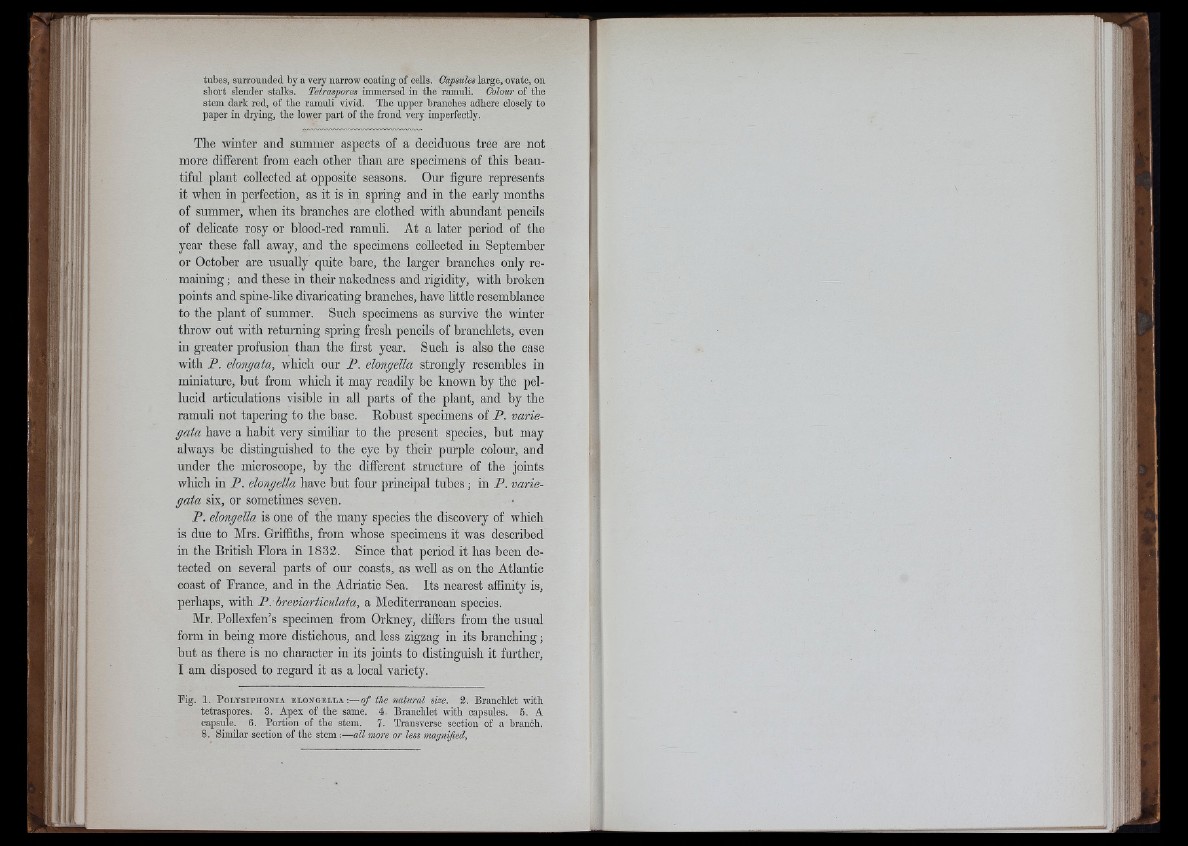
tubes, surrounded by a very narrow coating of cells. Capsules large, ovate, on
short slender stalks. Tetraspores immersed in the ranmli. Colour of the
stem dark red, of the ramuli vivid. The upper branches adhere closely to
paper in drying, the lower part of the frond very imperfectly.
The winter and summer aspects of a deciduous tree are not
more different from each other than are specimens of this beautiful
plant collected at opposite seasons. Our figure represents
it when in perfection, as it is in spring and in the early months
of summer, when its branches are clothed with abundant pencils
of delicate rosy or blood-red ramuli. At a later period of the
year these fall away, and the specimens collected in September
or October are usually quite bare, the larger branches only remaining
; and these in their nakedness and rigidity, with broken
points and spiiie-like divaricating branches, have little resemblance
to the plant of summer. Such specimens as survive the winter
throw out with returning spring fresh pencils of branchlets, even
in greater profusion than the first year. Such is also the case
with P. elongata, which our P. elongella strongly resembles in
miniature, but from which it may readily be known by the pellucid
articulations visible in all parts of the plant, and by the
ramuli not tapering to the base. Robust specimens of P. variegata
have a habit very similiar to the present sjiecies, but may
always be distinguished to the eye by their purple coloiu’, and
under the microscope, by the different structure of the joints
which in P. elongella have but fom' principal tubes ; in P. variegata
six, or sometimes seven.
P. elongella is one of the many species the discovery of which
is due to Mrs. Griffiths, from whose specimens it was described
in the British Flora in 1832. Since that period it has been detected
on several parts of our coasts, as well as on the Atlantic
coast of France, and in the Adriatic Sea. Its nearest affinity is,
perhaps, with P. breviarticulata, a Mediterranean species.
Mr. Pollexfen’s specimen from Orkney, differs from the usual
form in being more distichous, and less zigzag in its branching ;
but as there is no character in its joints to distinguish it further,
I am disposed to regard it as a local variety.
K g . 1. P o l y s ip h o n ia e l o n g e l l a :— o/ natural size. 2. Branchlet with
tetraspores. 3. Apex of the same. 4. Branchlet with capsules. 5. A
capsule. 6. Portion of the stem. 7. Transverse section of a branch.
Similar section of the stem :— all more or i
I
Him
■''•1